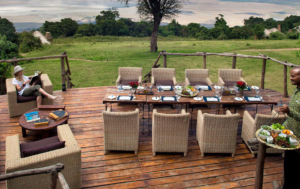Planning Your Tanzania Safari: Expert Advice for First-Timers
Embarking on a Tanzania safari is an adventure of a lifetime, filled with breathtaking landscapes and unparalleled wildlife experiences. Imagine witnessing the majestic migration of wildebeest across the Serengeti or spotting the elusive leopard lounging in the treetops. For first-time travelers, planning such an expedition may seem daunting, but fear not—our Tanzania travel guide is here to help. From selecting the best time for a Tanzania safari to providing essential safari planning advice, this guide will equip you with the knowledge to make your adventure unforgettable. Get ready to explore the wonders of Tanzania and let the wild call to your adventurous spirit. For more detailed itinerary options, check out this comprehensive Tanzania safari guide.
Preparing for Your Tanzania Safari
Before setting off on your Tanzania safari adventure, proper preparation is key. This section covers essential packing tips, health and safety guidelines, and how to navigate safari logistics.
Essential Packing Tips
Packing for a Tanzania safari requires careful consideration. The right gear can make or break your experience in the wild.
Start with clothing suitable for layering. Mornings and evenings can be cool, while midday temperatures soar. Opt for neutral colors like khaki, olive, and brown to blend with the environment and avoid attracting insects.
Don’t forget sun protection. Pack a wide-brimmed hat, sunglasses, and high-SPF sunscreen. Insect repellent is also crucial for comfort and safety.
Bring a good pair of binoculars for wildlife viewing, and a camera with extra batteries to capture unforgettable moments. A small daypack is useful for carrying essentials during game drives.
Health and Safety Guidelines
Prioritizing health and safety is crucial when planning your Tanzania safari. Consult your doctor or a travel clinic well in advance of your trip.
Vaccinations are a key consideration. Yellow fever vaccination is often required, and others like hepatitis A, typhoid, and meningitis may be recommended. Malaria prevention is also important, so discuss antimalarial medications with your healthcare provider.
Pack a basic first-aid kit including any personal medications, as well as remedies for common travel ailments. Travel insurance that covers medical emergencies and evacuation is strongly advised.
Stay hydrated and protect yourself from the sun to avoid heat-related illnesses. Always follow your guide’s safety instructions, especially around wildlife.
Navigating Safari Logistics
Understanding the logistics of your safari can help you make the most of your adventure. Tanzania Specialist offers expert guidance on planning your trip.
Transportation between parks often involves small planes or long drives. Be prepared for early mornings and full days of activities. Game drives typically last several hours, so comfort is key.
Most lodges and camps provide laundry services, allowing you to pack lighter. Check the luggage restrictions for any internal flights, as they’re often stricter than international airlines.
Remember that WiFi and cell service can be limited in remote areas. Embrace the opportunity to disconnect and fully immerse yourself in the safari experience.
Choosing Your Safari Destination
Tanzania offers a diverse array of safari destinations, each with its own unique appeal. From world-famous national parks to hidden gems, the choices can seem overwhelming.
Iconic Parks and Reserves
Tanzania’s iconic parks and reserves are renowned for good reason. They offer incredible wildlife viewing opportunities and stunning landscapes.
The Serengeti National Park is perhaps the most famous, known for its annual wildebeest migration and vast savannah plains. It’s a must-visit for first-time safari-goers.
Ngorongoro Conservation Area, with its ancient volcanic caldera, offers a unique ecosystem and the chance to see a high concentration of wildlife, including the endangered black rhino.
Tarangire National Park is famous for its large elephant herds and baobab trees, while Lake Manyara National Park is known for its tree-climbing lions and flamingo-filled lake.
Hidden Gems to Explore
While the famous parks are spectacular, Tanzania’s lesser-known destinations offer unique experiences away from the crowds. Yellow Zebra Safaris can help you discover these hidden treasures.
Ruaha National Park, Tanzania’s largest, offers a wild and remote safari experience with excellent predator sightings. It’s perfect for those seeking a more off-the-beaten-path adventure.
Selous Game Reserve (now partly Nyerere National Park) is a vast wilderness area where you can enjoy boat safaris along the Rufiji River, spotting hippos and crocodiles.
For a unique cultural experience, consider visiting Gombe Stream or Mahale Mountains National Parks, famous for chimpanzee trekking.
Wildlife Experiences Tanzania
Tanzania offers some of the most diverse wildlife experiences in Africa. From the Big Five to unique species, the country’s fauna is truly impressive.
In the Serengeti, witness the spectacle of the Great Migration, where millions of wildebeest and zebra traverse the plains. This natural wonder is a bucket-list item for many safari enthusiasts.
Ngorongoro Crater provides opportunities to see all of the Big Five (lion, leopard, elephant, rhino, and buffalo) in a single day. The crater’s unique ecosystem supports a high density of wildlife.
For bird lovers, Lake Manyara and the Rift Valley lakes offer excellent birdwatching opportunities, with flamingos often stealing the show.
Best Time for Tanzania Safari
Timing can significantly impact your Tanzania safari experience. Understanding seasonal variations helps in planning the perfect trip.
Seasonal Considerations
Tanzania’s seasons play a crucial role in shaping your safari experience. Each season offers unique wildlife viewing opportunities and landscapes.
The dry season, from late June to October, is generally considered the best time for wildlife viewing. Animals gather around water sources, making them easier to spot. The vegetation is also less dense, improving visibility.
The wet season, from November to May, brings lush landscapes and newborn animals. It’s an excellent time for bird watching and photography, with fewer crowds and lower prices.
Short rains in November and December, and long rains from March to May, can affect road conditions and some camp operations. However, they also offer unique green season experiences.
Weather and Wildlife Patterns
Understanding weather and wildlife patterns helps in planning a successful safari. These patterns significantly influence animal behavior and visibility.
During the dry season, daytime temperatures are pleasant, but nights and early mornings can be chilly. Animals concentrate around water sources, making for excellent game viewing.
The wet season brings afternoon showers and higher humidity. While some roads may become impassable, the landscapes are lush and beautiful. This is also the calving season for many animals.
The Great Migration follows a cyclical pattern influenced by rainfall. From December to March, the herds are in the southern Serengeti, moving north and west as the dry season approaches.
Planning Around Peak Times
Considering peak times is crucial for both availability and budget planning. Abercrombie & Kent can assist with navigating these considerations.
July to September is the peak safari season, coinciding with summer holidays in Europe and North America. This period offers excellent wildlife viewing but comes with higher prices and more crowded parks.
The shoulder seasons of October-November and March-May can offer good value, with decent wildlife viewing and fewer tourists. However, weather can be less predictable.
For those interested in the wildebeest calving season, plan your trip for late January to February in the southern Serengeti. This spectacular event attracts many visitors, so book well in advance.
Safari Activities and Experiences
A Tanzania safari offers a range of activities beyond traditional game drives. Exploring these options can enrich your safari experience.
Guided Game Drives
Guided game drives are the cornerstone of any safari experience. They offer the chance to explore vast landscapes and encounter wildlife up close.
Most game drives take place early morning and late afternoon when animals are most active. Your expert guide will help spot and identify wildlife, sharing insights about animal behavior and ecology.
Vehicle types vary, from open-sided 4x4s to more enclosed options. Each has its advantages, depending on the terrain and your preferences. Some camps offer private vehicles for a more personalized experience.
Night drives, where permitted, provide opportunities to see nocturnal animals and predators on the hunt. This unique experience offers a different perspective on the African bush.
Walking and Night Safaris
Walking safaris and night drives offer unique perspectives on the African wilderness. These activities provide immersive experiences that complement traditional game drives.
Walking safaris allow you to experience the bush on foot, focusing on smaller details often missed from a vehicle. Led by an armed guide, these walks offer insights into tracks, plants, and insects.
Night drives reveal a different side of the safari experience. Using spotlights, guides help you spot nocturnal animals like aardvarks, genets, and hunting predators. It’s a thrilling way to experience the sounds and sights of the African night.
Both activities are subject to park regulations and are not available in all areas. Check with your safari operator about availability at your chosen destinations.
Cultural Interactions and Tours
Engaging with local communities can add depth to your safari experience. Tanzania offers various opportunities for cultural interactions and tours.
Visit a Maasai village to learn about traditional lifestyles and customs. Many lodges offer guided visits where you can interact with community members and perhaps join in traditional dances.
For a more immersive experience, consider staying at a community-run lodge or participating in a homestay program. These options provide authentic insights into local life while supporting community development.
Cultural tours can also include visits to local markets, schools, or community projects. These experiences offer a broader understanding of Tanzania beyond its wildlife.
Practical Safari Planning Advice
Practical considerations are crucial for a smooth and enjoyable safari experience. From budgeting to accommodation choices, careful planning ensures a memorable trip.
Budgeting Your Adventure
Budgeting for a Tanzania safari requires careful consideration of various factors. Micato Safaris offers expert guidance on safari costs and options.
Safaris can range from budget-friendly to ultra-luxurious. Your total cost will depend on factors like accommodation type, duration, and chosen activities. As a general rule, expect to budget $400-$1000 per person per day for a mid-range to luxury safari.
Consider additional costs such as flights, visas, vaccinations, and travel insurance. Tipping is also customary on safari, so factor this into your budget.
Booking in advance or during shoulder seasons can often lead to better rates. Some operators offer group departures which can be more cost-effective than private safaris.
Understanding Safari Accommodations
Safari accommodations in Tanzania range from basic campsites to ultra-luxurious lodges. Understanding your options helps in choosing the right fit for your preferences and budget.
Tented camps offer an immersive bush experience. These can range from simple dome tents to luxurious canvas suites with en-suite bathrooms. Many provide a perfect balance of comfort and wilderness feel.
Lodges offer more permanent structures, often with amenities like swimming pools and spa facilities. They’re a good choice for those seeking more comfort or traveling with family.
Mobile camps follow wildlife movements, particularly during the Great Migration. These offer an adventurous experience, allowing you to be close to the action.
Consider the location, views, and activities offered when choosing your accommodation. Some properties offer unique experiences like treehouse stays or star beds for sleeping under the African sky.
Tanzania Travel Guide Essentials
A comprehensive Tanzania travel guide is essential for a well-planned safari. Trusted Travel Girl offers valuable insights for first-time safari-goers.
Visa requirements vary depending on your nationality. Many visitors can obtain a visa on arrival, but it’s often easier to apply online in advance. Check the latest requirements before your trip.
Tanzania uses the Tanzanian Shilling, but US dollars are widely accepted in tourist areas. Bring some cash for tips and small purchases, as ATMs can be scarce in remote areas.
Swahili is the national language, but English is widely spoken in the tourism industry. Learning a few basic Swahili phrases can enhance your interactions with locals.
Respect local customs and dress codes, particularly when visiting villages or religious sites. Always ask permission before taking photos of people.
Remember to be patient and flexible. Safari schedules can change due to weather or animal movements. Embrace the unpredictability as part of the adventure!










